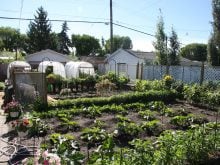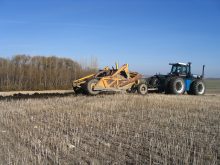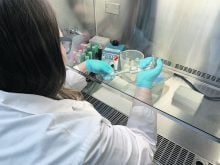If annual crops on marginal land are a waste of time and money, can forages deliver value instead?
The quest to find perennial forages that successfully suck up salt, thus re-claiming saline soil and converting it into productive land, dates back to the 1930s in the American Dust Bowl states.
After nine decades of searching, converting saline spots into productive cereal or canola cropland remains a distant dream. At best, scientists hope to develop perennial varieties that at least allow those areas to be profitably harvested as a forage crop.
As part of this search, a five-year variety trial is now into year two at the Glacier Farm Media Discovery Farm at Langham. The three varieties being compared are Halo Alfalfa 2, AC Saltlander and a commercially-available blend known as Salinemaster. Observations so far indicate that all three can establish well in saline soils and compete against weeds such as foxtail barley and kochia.
Read Also

House ag committee to undertake several studies
The House of Commons standing agriculture committee has set its agenda for the coming months. Members began the fall sitting with a two-hour update on international trade
“The big question remains: can perennial forages be used as a tool to manage salt-affected soils on the Canadian prairies?” said agronomist Blake Weiseth, director of research at Discovery Farm and manager of the project.
“The Salinity Project digs into possible answers by comparing different perennial forages to document their establishment and productivity on salt-affected soils. The knowledge we gain will be used as a more of a management tool than an actual cure for salinity.”
Weiseth said the project also evaluates changes in soil properties, allowing his team to assess how various management practices influence the surface layer. The team started by taking baseline soil samples, allowing them to document what, if any, saline mitigation they might achieve. They expect after five years, the surface salts may get pushed down deeper into the soil as the water gets used up.
“More importantly we want farmers to see some revenue generated from harvesting forages on acres that currently produce nothing. It’s a waste of time and money trying to grow annual crops on marginal land.”
Saline mitigation has been too successful in some areas.
“I think there’s a risk that certain varieties can bio-accumulate and take up salts in the bio-mass. On the one hand you’re physically removing salt from the soil profile. On the other hand you’re moving it to a new location,” Weiseth said.
The hope is to find forage varieties adapted to grow in saline conditions, ones that can draw enough water to pull the water table down and take the soil salts deeper at the same time.
“Considering the drought conditions, I was impressed by all three treatments,” Weiseth said. AC Saltlander produced the most biomass, with Halo Alfalfa 2 and Salinemaster coming in second and third.
“But the yields were nearly equal, so the ranking doesn’t mean much,” he said, noting that Salinemaster is a blend of perennial forages developed by Proven Seed, one of the project partners.
The Salinity Project is a collaborative effort with Ducks Unlimited Canada, and Nutrien Ag Solutions and Proven Seed. For those looking for more information, Weiseth will be presenting on it at Ag In Motion Livestock Days, August 20 and 21 near Langham, Sask.


















